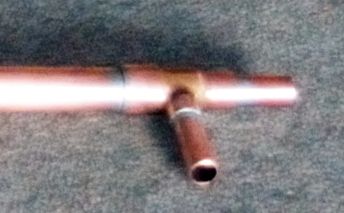Lowriderzz, sorry I did not get a chance to look at your design earlier. The pipe exiting the top of the reflux must immediately turn down wards so that fully cracked vapours cannot flow back down into the reflux column. Dont put catalyst in the condenser, it will serve no purpose and it may block the condenser, stainless steel wool or BBs aluminium flyscreen will work better.
The u bend at the fuel outlet looks a little shallow. It must be twice the height of the bubbler depth or you will get vapours coming out of it.
I got caught out when I added my second bubbler. I stupidly thought that 2 bubblers in series each 6 inches deep would create a back pressure of 6 inches in total, but of course they dont. They create a back pressure of 12 inches. So I had to make my fuel u tube 24 inches deep.
The u bend at the fuel outlet looks a little shallow. It must be twice the height of the bubbler depth or you will get vapours coming out of it.
I got caught out when I added my second bubbler. I stupidly thought that 2 bubblers in series each 6 inches deep would create a back pressure of 6 inches in total, but of course they dont. They create a back pressure of 12 inches. So I had to make my fuel u tube 24 inches deep.




Comment